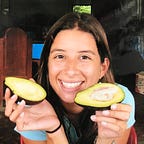Nature’s Mirrors and our Sense of Taste and Smell
I am not a scientist but lately I’ve been fascinated by food science and from time to time I enjoy nerding out on chemistry with my friend Matt. Last night I called him for a stereochemistry 101 lesson.
In a nutshell, seterochemistry explores how atoms in molecules are arranged. On one hand, molecules can be exact replicas so if you superimposed one on top of the other, everything lines up perfectly. On the other hand, those molecules can also be like… well, our hands: they’re mirror images of each other and do not line up when you place one on top of the other. Matt had me look at an amino acid: they can have the exact same atoms but instead of, say, a hydrogen being to the left of a carbon, it’ll be to its right. That arrangement then gives molecules a right-handed or left-handed nature, also known as chirality. And in biology, atomic arrangements matters.
For example, there’s a famous drug, Thalidomide, that was used to treat morning sickness in pregnant women. The left-handed Thalidomide worked well, but the right-handed version was highly toxic and resulted in birth defects.
In food, chirality impacts how we smell or taste. Our smell receptors are chiral and respond to chiral molecules in fantastically different ways. Carvone, a chemical compound found in some herbs and spices, smells like spearmint if it’s right-natured or like caraway seeds if it’s left-natured. That’s a pretty big difference for such a tiny tweak.
